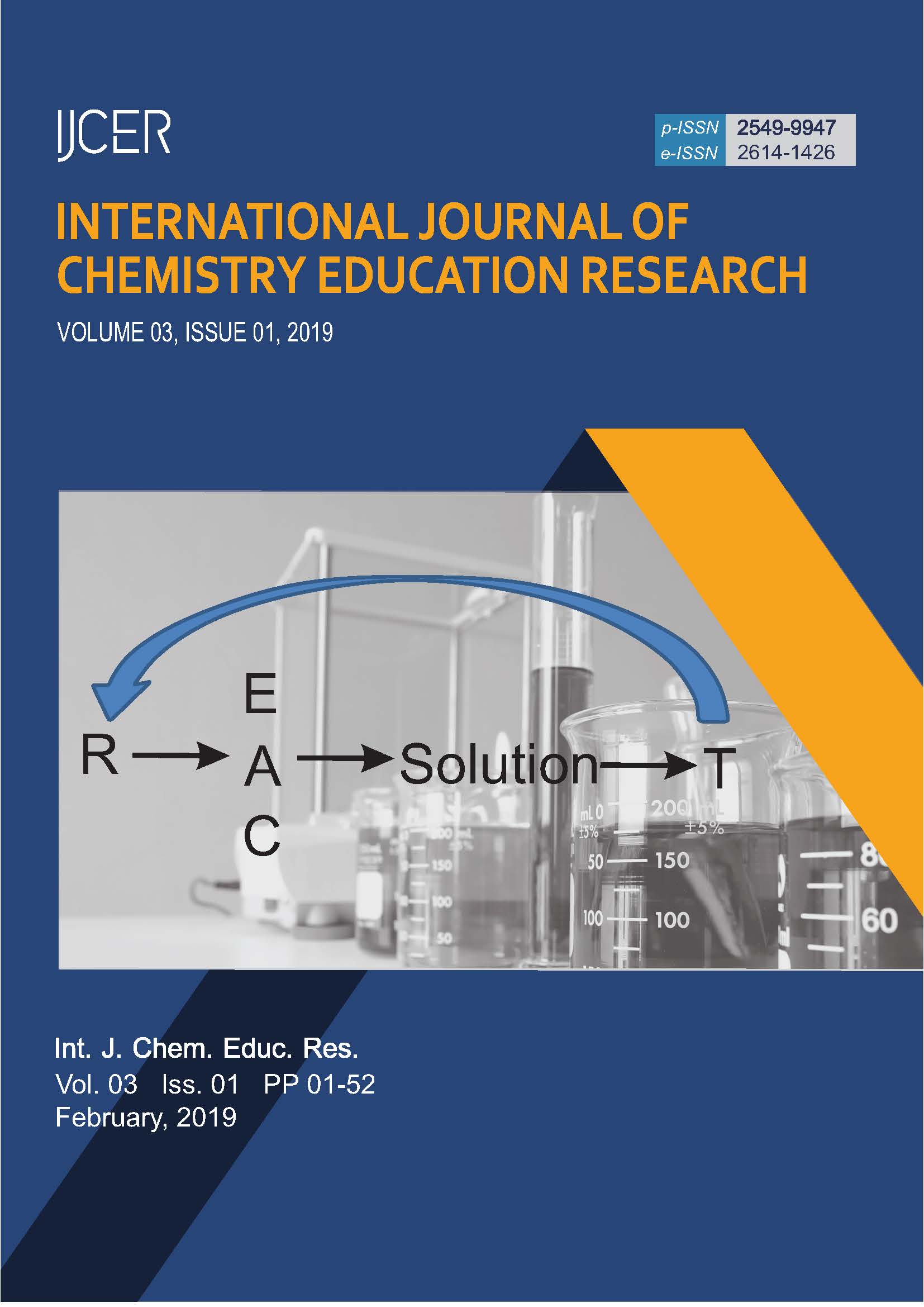Main Article Content
Abstract
Article Details
Author retain copyright and grant the journal right of first publication with the simultaneously licenced under A Creative Commons Attribution (CC-By-SA) 4.0 License that allows others to share the work with an acknowledgment of the worsk's authorship and initial publication in this journal.
References
- Prayitno, Pelayanan Bimbingan dan Konseling (SLTP), (Bina Sumber Daya MIPA, Jakarta, 1997).
- Suyono and Hariyanto, Belajar dan Pembelajaran, (Remaja Rosda Karya, Bandung, 2011).
- M.L. Crawford, Teaching Contextually, (CCI Publishing, Texas, 2001).
- E. Ultay, EEST Part B Social and Educational Studies. 4, 1, 233-240 (2012).
- Susanto, E. Susilowati, and Haryono, JPK. 1, 1, 67-73 (2012).
- D. Apriyanto, S. Mulyani and E. Susanti, JPK, 3, 3, 1-10 (2014).
- R.R.T. Wasonowati, T. Redjeki and S.R.D. Ariani, JPK., 3, 3, 66-75 (2014).
- A. Navarra, Achieving Pedagogical Equity in The Classroom, (Cord International, Texas, 2006).
- O. Fakhruriza and I. Kartika, JRKPF, 2, 2, 54-57 (2015).
- D. P. Ausubel, The Acquisition and Retention of Knowledge: A Cognitive View, (Springer Science Business Media, New York, 2000).
- A. Budiningnish, Belajar dan Pembelajaran, (Rineka Cipta, Jakarta, 2012).
- Djaali, Psikologi Pendidikan, (Bumi Aksara, Jakarta, 2011).
- Depdiknas, Kurikulum Tingkat Satuan Pendidikan, (Depdiknas, Jakarta, 2008).
- N.M. Meita, Lensa, 6, 1, 15-28 (2016).
- A. Farid, “Pengaruh penerapan strategi REACT terhadap hasil belajar kimia siswa kelas XI MAN Babakan Lebaksiu Tegal,” Skripsi, Universitas Negeri Semarang, 2013.
References
Prayitno, Pelayanan Bimbingan dan Konseling (SLTP), (Bina Sumber Daya MIPA, Jakarta, 1997).
Suyono and Hariyanto, Belajar dan Pembelajaran, (Remaja Rosda Karya, Bandung, 2011).
M.L. Crawford, Teaching Contextually, (CCI Publishing, Texas, 2001).
E. Ultay, EEST Part B Social and Educational Studies. 4, 1, 233-240 (2012).
Susanto, E. Susilowati, and Haryono, JPK. 1, 1, 67-73 (2012).
D. Apriyanto, S. Mulyani and E. Susanti, JPK, 3, 3, 1-10 (2014).
R.R.T. Wasonowati, T. Redjeki and S.R.D. Ariani, JPK., 3, 3, 66-75 (2014).
A. Navarra, Achieving Pedagogical Equity in The Classroom, (Cord International, Texas, 2006).
O. Fakhruriza and I. Kartika, JRKPF, 2, 2, 54-57 (2015).
D. P. Ausubel, The Acquisition and Retention of Knowledge: A Cognitive View, (Springer Science Business Media, New York, 2000).
A. Budiningnish, Belajar dan Pembelajaran, (Rineka Cipta, Jakarta, 2012).
Djaali, Psikologi Pendidikan, (Bumi Aksara, Jakarta, 2011).
Depdiknas, Kurikulum Tingkat Satuan Pendidikan, (Depdiknas, Jakarta, 2008).
N.M. Meita, Lensa, 6, 1, 15-28 (2016).
A. Farid, “Pengaruh penerapan strategi REACT terhadap hasil belajar kimia siswa kelas XI MAN Babakan Lebaksiu Tegal,” Skripsi, Universitas Negeri Semarang, 2013.




